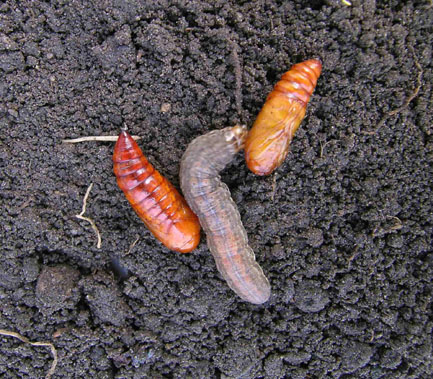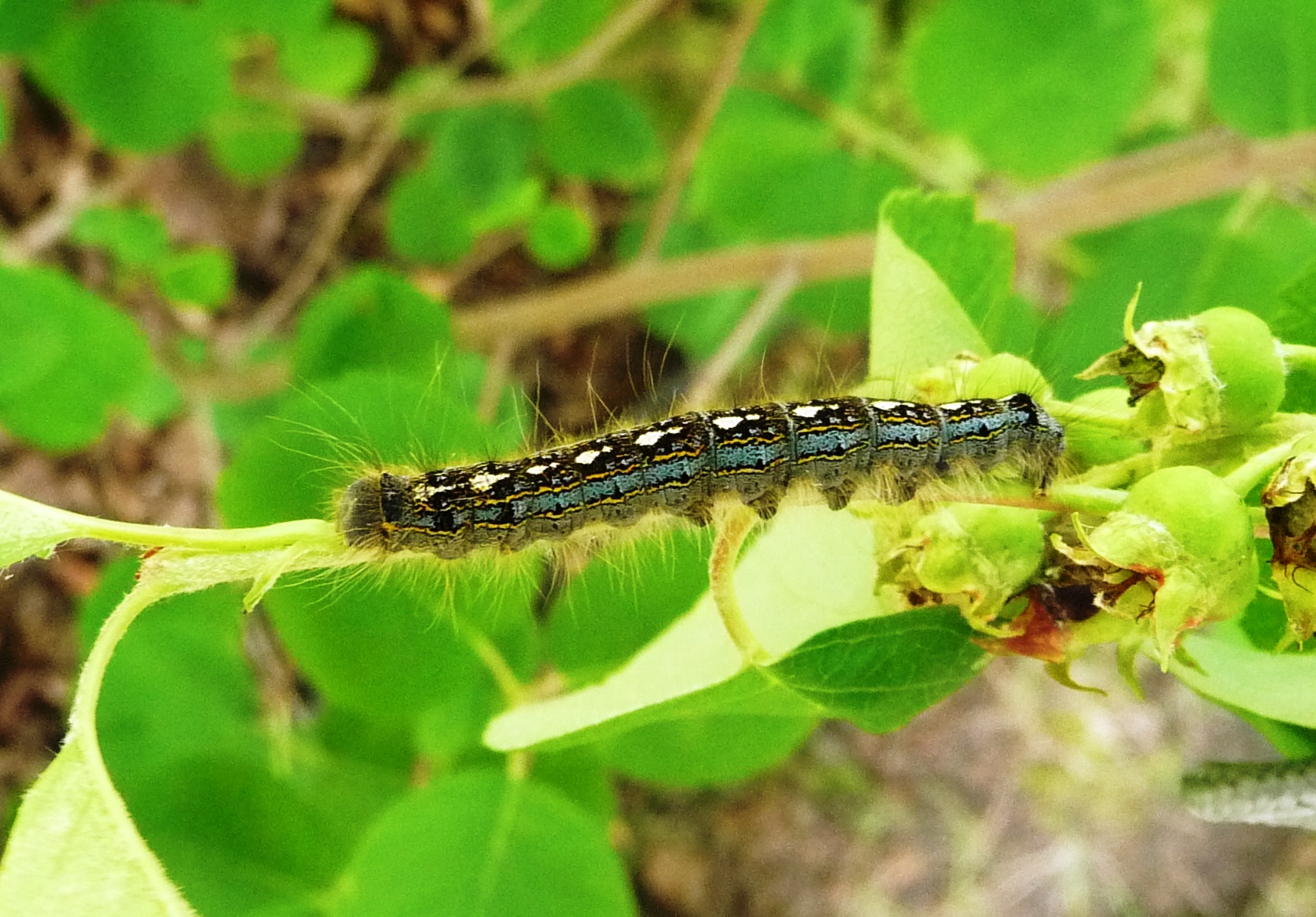Manitoba Insect & Disease Update
Issue 4: June 8, 2016
Summary
Insects: Cutworms are getting larger and have been an issue in some fields. The highest level of damage appears to be in the Northwest, where there has been some reseeding because of cutworm feeding. Flea beetle feeding continues, although foliar use of insecticides for flea beetle management has not been widespread. In many fields plants are now getting to stages more tolerant to feeding by flea beetles.
Plant Pathogens: Stripe rust has been detected in Manitoba. Scout for stripe rust and report any detection. Stripe rust incidences will need to be closely monitored.
Diseases in Wheat
Stripe rust has been detected at a low incidence in a winter wheat field near Gladstone, MB. It was found in the lower canopy. Stripe rust was also reported in winter wheat fields in the northeastern corner of North Dakota 24 km away from Canadian border. Therefore, scouting will be very important.
For more information on stripe rust
Low incidence of leaf spot diseases were also reported in winter wheat.
Diseases in Soybeans
Soybean plants with root rot symptoms were submitted to Manitoba Agriculture’s Crop Diagnostic lab. Root rots in soybeans are caused by pathogens like Fusarium spp, Phytophthora sojae, Rhizoctonia spp and Pythium spp.
Cutworms
There have been some fields with economical levels of cutworms, with some reports of extensive damage and reseeding of canola and oats because of cutworm feeding in the northwest. If noting severed plants or feeding that could be because of cutworms, dig around the damaged plants to try to find the cutworms. They should be larger now and easier to find. In some fields, depending on the species of cutworm present, larvae may be starting to turn to pupae. So it is good to check the stage of the cutworms when assessing whether management options would be economical.
How long will cutworms feed: If there are still a lot of cutworms under an inch long, then there is still ample time for higher populations to do economic damage. As a general guideline, once they get over an inch long they will be pupating soon and applying controls may be more expensive then the damage you are preventing.

Figure 1. Redbacked cutworm pupae and larva.
Flea Beetles
How long does canola remain susceptible to flea beetles? A general guideline is that once the canola has 3 or 4 true leaves expanded, it will compensate well for feeding by flea beetles. Research in Manitoba found that yield was reduced most when plants were damaged during the seedling to second true leaf stage, but was not reduced when they were damaged after reaching the third to fourth true leaf stage.
Forest Tent Caterpillars
Forest tent caterpillars (Malacosoma disstria) have been abundant in many part of Manitoba this year. They are also getting to be larger caterpillars and should be starting to turn to pupae soon, ending their foliage feeding stage for the year. Some have been asking if they are a threat to crops. Aside from possibly fruit crops, they are not a threat to crops.
Forest tent caterpillars feed mainly on deciduous trees and shrubs. With heavy populations there can be a lot of defoliation. Healthy trees will grow back their leaves 2 to 3 weeks after defoliation.
Regarding managing them, young colonies of larvae can be pruned off or removed while they are resting in clusters on the main stem, especially in the evening or on cool nights, where this is practical. As for insecticides, the B.t. based products (Dipel, Bioprotect, or BTK) are favoured by many because they are specific to caterpillars and will not kill beneficial insects, bees, etc. They are bacterial based insecticides that are quite specific and safe. Other options, if the trees are not flowering, include malathion, sevin, decis, and pounce. If using any of these, remember to check the labels for specific trees these products are registered for. And try to avoid using these on trees that are flowering, as they can be harmful to pollinators.


Figure 2. Forest tent caterpillar.
Insect Monitoring Programs
Diamondback Moth: Some traps started to record moth counts that likely resulted from low populations arriving in Manitoba prior to or during the week of May 1-7. Levels of moths captured in traps in subsequent weeks have varied depending on the region of Manitoba.
Numbers caught in traps in most regions generally do not suggest a high risk of more widespread economic populations. For those scouting canola and cruciferous crops in the Northwest and Eastern Manitoba, examining plants for diamondback moth larvae is encouraged as localized economical populations could occur. Once diamondback moth adults are moved into an area on wind currents, factors such as weather conditions and natural enemies will determine how successful larvae become established.
Table 1. Highest cumulative trap counts per region over the trapping period (May 1 to June 4, 2016):
| Location | Count |
|---|---|
| Northwest | |
| Minitonas | 165 |
| The Pas | 125, 71, 64 |
| Birch River | 51 |
| Southwest | |
| Hamiota | 9 |
| Isabella | 8 |
| Justice | 6 |
| Central | |
| Carman | 31 |
| Rosebank | 28 |
| Fairview | 21 |
| Eastern | |
| Morris | 76 |
| Rosenort | 46 |
| Ste. Elizabeth | 37 |
| Interlake | |
| E. Selkirk | 14 |
| Lundar | 11 |
| Grahamdale | 8 |
A summary of diamondback moth monitoring in Manitoba, and more detailed interpretation, can be found at:
http://www.gov.mb.ca/agriculture/crops/insects/diamondback-moth-forecast.html Bertha armyworm: A reminder for those who will be setting up traps to monitor bertha armyworm moth levels that trap setup is during the week of June 5 to 11.
Compiled by:
John Gavloski, Entomologist Pratisara Bajracharya, Field Crop Pathologist
Manitoba Agriculture Manitoba Agriculture
Phone: (204) 745-5668 Phone: (204) 750-4248
To report observations on insects or plant pathogens that may be of interest or importance to farmers and agronomists in Manitoba, please send messages to the above contacts.
To be placed on an E-mail list so you will be notified immediately when new Manitoba Insect and Disease Updates are posted, please contact John Gavloski .
